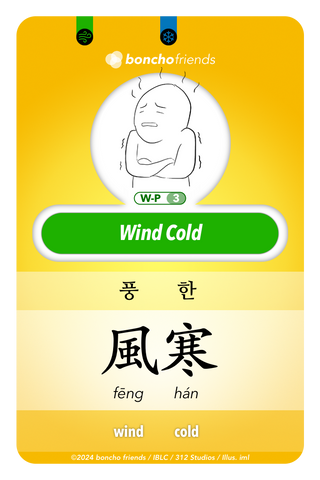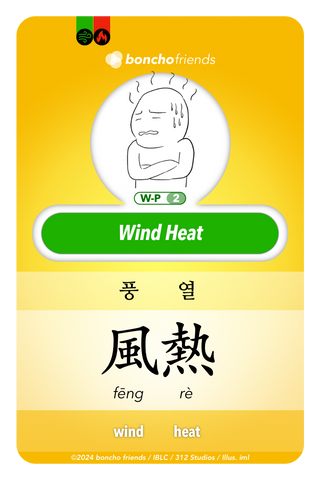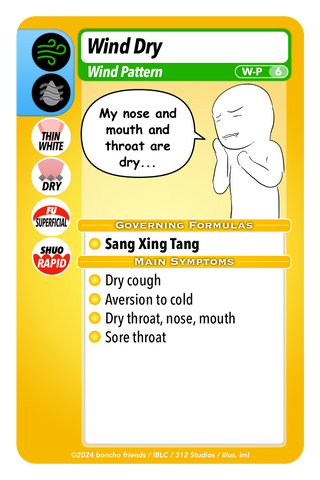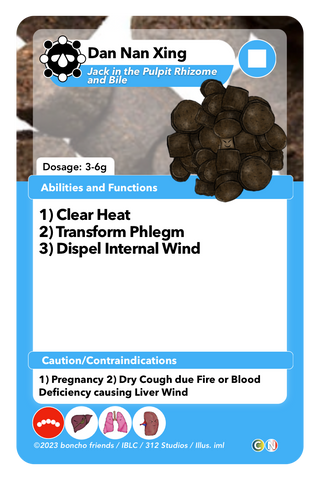
Understanding Cough: A Comprehensive Approach from Traditional Chinese Medicine
Share

Coughing is a common ailment that affects people of all ages, often signaling an underlying respiratory issue. In Traditional Chinese Medicine (TCM), coughs are not simply viewed as a single entity but are classified into various types based on the presenting symptoms and underlying imbalances in the body's energetic system. By understanding these classifications, TCM practitioners can tailor treatment approaches to address the root cause of the cough effectively.
Cough from Wind Cold
Key Characteristics: Acute, heavy sound, thin white sputum
Wind Cold Pattern:


Main Symptoms: Fever, Aversion to cold, No sweat, Bodyache, Headache, Cough with heavy turbid sound, Thin white phlegm
Tongue: Thin White
Pulse: Tight, Superficial
Herbal Formula: Ma Huang Tang
Acu Points: DU 16, UB 12, DU 20, LU 7, LI 4, KD 7
Cough from Wind Heat
Key Characteristics: Acute, loud sound, thick yellow sputum
Wind Heat Pattern:


Main Symptoms: Fever, Cough with copious thick yellow sputum, Thirst, Headaches, Body Aches, Sore throat, Aversion to cold
Pulse: Rapid, Superficial
Herbal Formula: Sang Ju Yin, Yin Qiao San
Acu Points: DU 14, LI 11, SJ 5, LI 4, LU 10, LU 11
Cough from Wind Dry
Key Characteristics: Acute, dry sound, thick sticky phlegm or no sputum
Wind Dry Pattern:


Main Symptoms: Dry cough,Aversion to cold, Dry throat, nose, mouth, Sore throat
Tongue: Slightly red sides and/or front part
Pulse: Superficial
Herbal Formula: Xing Su San
Acu Points: LU 7, LU 9, Ren 12, KD 6
Cough from Rheum Obstructing Lungs
Key Characteristics: Chronic, profuse thin watery sputum
Rheum Obstructing Lungs Pattern:


Main Symptoms: Cough with watery, foamy sputum, Shortness of breath, Chills, Feeling heaviness, Dizziness
Tongue: Pale, Swollen, Greasy, White
Pulse: Soggy
Herbal Formula: Ling Gan Wu Wei Jiang Xin Tang
Acu Points: LU 5, LU 1, Ren 12, Ren 9, ST 40, SP 6, SP 9, KD 7, ST 36, UB 13, DU 4, UB 23
Cough from Damp Phlegm Obstructing Lungs
Key Characteristics: Chronic, profuse white sputum
Damp Phlegm Obstructing Lungs Pattern:


Main Symptoms: Cough, Wheezing, Chest fullness, Phlegm in throat, Shortness of breath, Feeling of heaviness, Pale complexion
Tongue: White, Swollen, Greasy
Pulse: Slippery, Soft
Herbal Formula: Er Chen Tang
Acu Points: LU 1, LU 5, Ren 12, Ren 9, ST 36, ST 40, SP 6, SP 9, KD 7, UB 13, UB 20
Cough from Phlegm Heat Obstructing Lungs
Key Characteristics: Acute, barking sound, profuse sticky yellow sputum
Phlegm Heat Obstructing Lungs Pattern:


Main Symptoms: Cough with copious thick yellow sputum, Wheezing, Dizziness, Fever, Shortness of breath, Chest distention, Heaviness of head and body
Tongue: Red, Yellow, Swollen, Greasy
Pulse: Rapid, Slippery
Herbal Formula: Qing Qi Hua Tan Wan
Acu Points: LU 5, LU 1, Ren 12, Ren 9, ST 40, SP 6, UB 20, ST 36, UB 13, DU 14, LI 11, Ren 12
✍️Note on Resolving Phlegm✍️
In classical TCM texts, the emphasis on resolving phlegm as a treatment method for cough is evident. However, it's essential to recognize that this recommendation primarily stems from the perspective of herbal medicine. Herbal remedies often employ acrid and drying herbs, such as Ban Xia and Dan Nan Xing, which actively dry up phlegm to alleviate cough symptoms.


Acupuncture point ST 40 (Feng Long) is often associated with resolving phlegm. Its efficacy lies in subduing rebellious Qi in the chest and facilitating its descent. Additionally, by regulating the ascending and descending movements of Stomach Qi, ST 40 indirectly influences Spleen Qi, thereby promoting the proper transportation and transformation of fluids, ultimately resolving phlegm.

Cough from Lung Heat
Key Characteristics: Acute, barking sound, thick yellow sputum
Lung Heat Pattern:


Main Symptoms: Cough with yellow sputum, Thirst, Sweating, Strong fever, Shortness of breath
Tongue: Red, Yellow
Pulse: Rapid, Slippery
Herbal Formula: Ma Xing Shi Gan Tang
Acu Points: LU 5, LU 10, DU 14, LI 11, LU 1, UB 13
Cough from Lung Qi Deficiency
Key Characteristics: Chronic, low sound, no sputum
Lung Qi Deficiency Pattern:


Main Symptoms: Shortness of breath, Aversion to speak, Spontaneous sweating
Tongue: Pale
Pulse: Deficient
Herbal Formula: Bu Fei Tang
Acu Points: LU 9, UB 13, LU 7, UB 43, Ren 12, ST 36, SP 6
Cough from Lung Yin Deficiency
Key Characteristics: Chronic, dry sound, scanty sputum, no sputum, or blood streaked sputum
Lung Yin Deficiency Pattern:


Main Symptoms: Dry cough, Dry throat, Weak hoarse voice, Itchy throat, Aversion to speak
Tongue: No coating, dry, Cracks on lung area (If there is Empty Heat, the tongue body is red)
Pulse: Superficial, Deficient
Herbal Formula: Sha Shen Mai Dong Tang
Acu Points: LU 9, LU 10, Ren 12, LU 1, ST 36, SP 6, LU 7, KD 6
Other Commonly Used Acupuncture Points and Herbs for Cough Treatment:
Commonly used acupuncture points for cough treatment include Ren 22 and Ding Chuan.
Ren 22 benefits the throat, descends rebellious lung Qi, expels phlegm, and can treat asthma, cough, difficulty swallowing, dry throat, hiccups, sore throat, and sudden hoarseness of the voice.

Ding Chuan calms asthma, dispels wind, stops cough, and can address asthma, cough, back and shoulder pain, neck rigidity, and rubella.

Commonly used herbs include:
In conjunction with acupuncture, herbal remedies are frequently employed in cough treatment.
Xing Ren: This herb helps to stop coughing, soothe wheezing, moisturize the intestines, and alleviate bowel blockages.

Sang Bai Pi: It drains heat from the lungs, suppresses coughing, eases wheezing, promotes urination, and reduces swelling.

Zi Su Zi: This herb aids in stopping coughs, calming wheezing, redirecting Qi downward, dissolving phlegm, moisturizing the intestines, and unblocking the stool.
Kuan Dong Hua: It works to moisturize the lungs, guide Qi downward, suppress coughing, and transform phlegm. However, caution is advised, particularly in cases involving coughing of blood or pus.
With this comprehensive approach, TCM offers effective strategies for managing various types of coughs, addressing both symptoms and underlying imbalances in the body's energetic system!
TCM Study Cards used in this post:
- Pattern Cards: Foundations Deck
- Acupuncture Cards: Acupuncture Deck
- Single Herb Cards: Herbology Deck
Study TCM with Boncho Friends. It's simple, easy, and fun!
